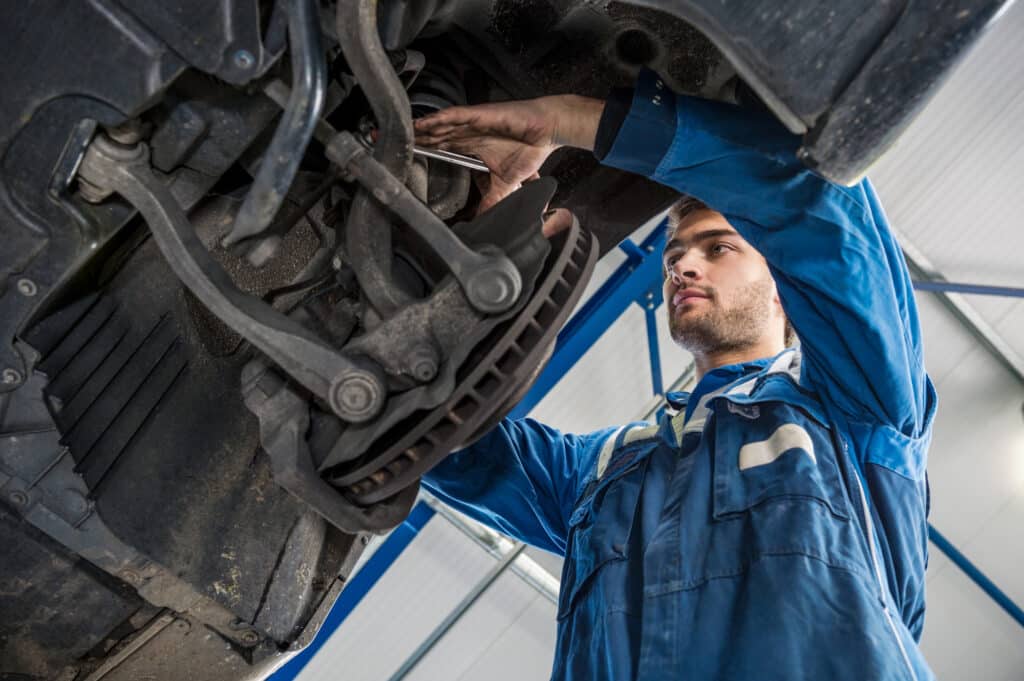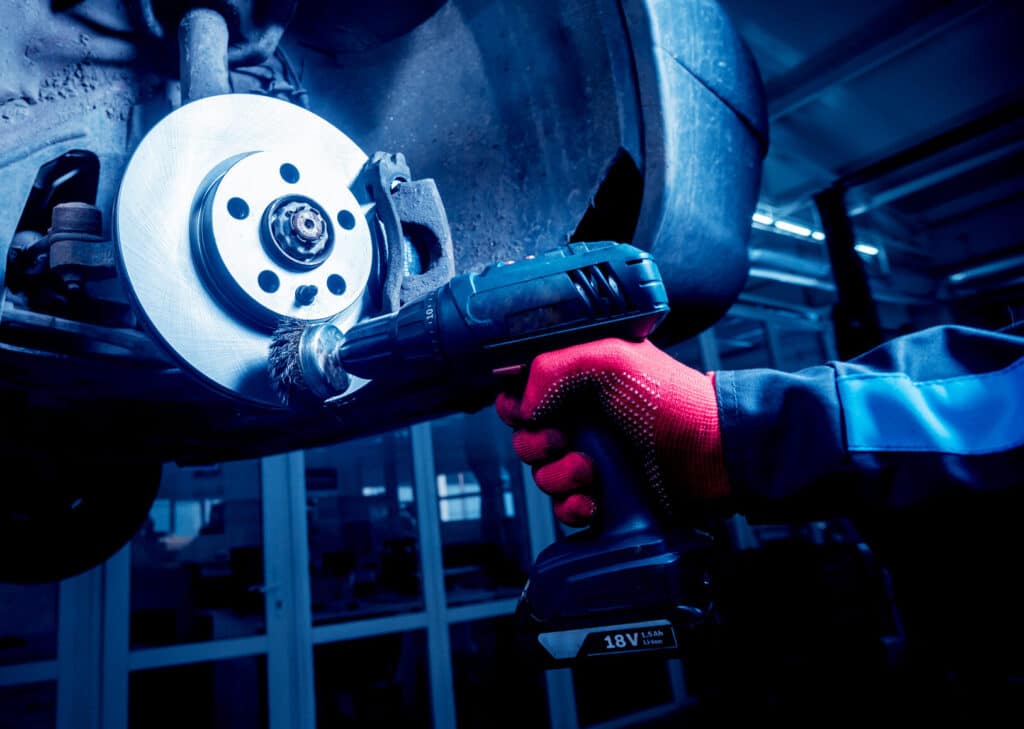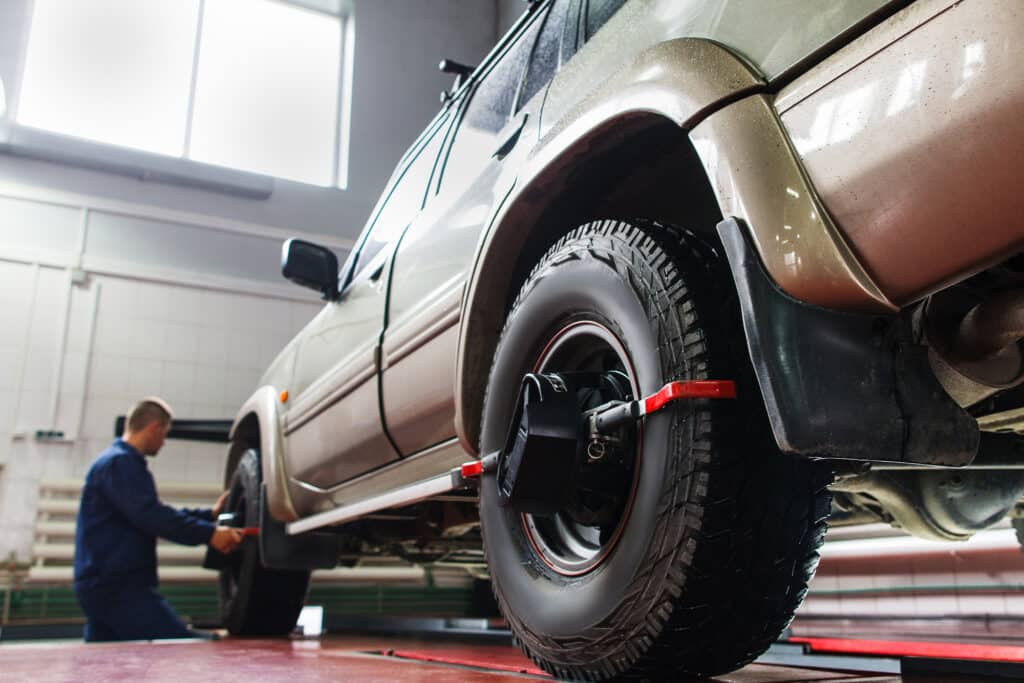Brake Repair Murray
Get Back on the Road Safely: Brake Repair Murray Services
When it comes to your safety on the road, few things are as crucial as having a well-functioning brake system. Whether you’re commuting to work, running errands, or embarking on a road trip, reliable brakes are essential to ensure you and your passengers arrive safely at your destination. In this post, we’ll explore everything you need to know about brake repair Murry services in Murray, highlighting signs that your brakes need attention, understanding how brake systems work, and why regular maintenance is essential.
Signs Your Brakes Need Attention
Recognizing the signs that your brakes need attention is crucial for maintaining your vehicle’s safety. Here are some key indicators:
- Squealing or Grinding Noises: If you hear a high-pitched squeal or grinding noise when applying the brakes, it may indicate worn brake pads that need to be replaced.
- Spongy or Soft Brake Pedal: A brake pedal that feels spongy or soft when pressed can be a sign of air in the brake lines or a problem with the brake fluid.
- Vibrations When Braking: If you feel vibrations or pulsations through the brake pedal when braking, it could be due to warped rotors that need resurfacing or replacement.
- Warning Lights: Modern vehicles are equipped with brake warning lights on the dashboard. If this light activates, it’s a direct indication that your braking system needs inspection.
- Pulling to One Side: When your car pulls to one side while braking, it could be an indication of uneven brake pad wear or a problem with the brake caliper.
- Burning Smell: A sharp, chemical odor after hard braking can signal overheated brakes or even brake fluid leaks, necessitating immediate attention.
Addressing these signs promptly can prevent further damage to your vehicle and ensure that you remain safe on the road.

Brake Repair Murray
Understanding Brake Systems
To fully appreciate the importance of brake repair services, it’s essential to understand how brake systems work. At their core, brake systems in most vehicles are either disc brakes or drum brakes.
- Disc Brakes: These are the most common type in modern vehicles. When the brake pedal is pressed, hydraulic fluid is sent through brake lines to squeeze a pair of calipers against a disc, or rotor, attached to the wheel. This friction between the pads and the disc slows down and stops the vehicle. Disc brakes are highly effective in dispersing heat and are known for their superior stopping power.
- Drum Brakes: Though less common today, drum brakes are still used on some rear wheels. In this system, the brake pedal activates hydraulic cylinders, pressing brake shoes against the inside of a drum attached to the wheel. While they are generally more cost-effective and easier to integrate with parking brakes, drum brakes are less efficient at heat dispersion compared to disc brakes.
- Anti-lock Braking System (ABS): A critical advancement in braking technology is the ABS, which prevents the wheels from locking up during emergency stops. By rapidly pulsing the brake pressure, ABS maintains traction and steering control, significantly reducing stopping distances on slippery surfaces.
- Brake Fluid: This hydraulic fluid plays a crucial role in transferring the force from your brake pedal to the brakes themselves. Maintaining the correct level and condition of brake fluid is vital, as it can absorb moisture over time, leading to decreased efficiency and potential brake failure.
Understanding these components and how they interact helps underscore the importance of regular brake maintenance and timely repairs, ensuring that your vehicle’s braking system remains in top condition.
Importance of Regular Brake Maintenance
Regular brake maintenance is not just a matter of convenience; it is a critical aspect of vehicle safety and performance. Consistent maintenance helps ensure that all components of the braking system are functioning correctly, reducing the risk of unexpected failures and costly repairs. Regularly scheduled inspections can identify issues such as worn brake pads, contaminated brake fluid, or compromised brake lines before they become severe problems. This proactive approach not only enhances your vehicle’s braking efficiency but also extends the lifespan of the braking system components, saving you money in the long run.
Moreover, regular brake maintenance contributes to better driving comfort and confidence. With a well-maintained brake system, you can enjoy smoother stops, reduced noise, and improved responsiveness, which enhances overall driving experience. Additionally, keeping your brakes in top condition is essential for maintaining optimal fuel efficiency, as dragging brakes can cause your vehicle to work harder and consume more fuel.
In summary, prioritizing regular brake maintenance is an investment in your safety and the longevity of your vehicle. By adhering to your vehicle manufacturer’s recommended maintenance schedule and addressing any brake issues promptly, you ensure a safer, more reliable driving experience.

Brake Maintenance
Choosing the Right Brake Repair Services in Murray
Selecting a reliable brake repair service in Murray is essential to ensure your vehicle’s safety and performance. Here are some key considerations to help you make the best choice:
- Reputation and Reviews: Start by researching the reputation of brake repair shops in Murray. Look for customer reviews and ratings on websites such as Google, Yelp, and the Better Business Bureau. Positive feedback and high ratings from satisfied customers are strong indicators of a trustworthy service provider.
- Certifications and Experience: Ensure that the technicians at the repair shop are certified and have substantial experience working with various brake systems. Certifications from organizations such as the National Institute for Automotive Service Excellence (ASE) demonstrate that the technicians have undergone rigorous training and testing.
- Comprehensive Services: Choose a repair shop that offers a wide range of brake services, including inspection, repair, replacement, and maintenance. A shop that can handle everything from rotor resurfacing to brake fluid replacement ensures that you can address all your brake-related needs in one place.
- Quality Parts: Inquire about the quality of the parts used for brake repairs. Reliable repair shops use high-quality, OEM (Original Equipment Manufacturer) parts or equivalent to ensure the longevity and efficiency of your braking system.
- Transparent Pricing: A reputable brake repair service will provide transparent pricing and detailed estimates for any work needed. Avoid shops that are vague about costs or fail to provide a clear breakdown of expenses. Look for establishments that offer warranties on their parts and services, which adds an extra layer of assurance.
- Customer Service: Pay attention to the level of customer service provided. Friendly, communicative staff who take the time to explain issues and answer your questions are invaluable. A good brake repair shop should prioritize customer satisfaction and be willing to go the extra mile to ensure a positive experience.
- Convenience and Availability: Consider the convenience of the repair shop’s location and their hours of operation. A shop that offers flexible hours, shuttle services, or loaner vehicles can make the maintenance process more manageable and less disruptive to your daily routine.
By keeping these factors in mind, you can confidently choose the right brake repair service in Murray, ensuring your vehicle remains safe and reliable on the road.
Common Brake Repairs and Their Costs
Understanding the common brake repairs and their associated costs can help you make informed decisions about your vehicle’s maintenance. Below are some typical brake repairs and what you might expect to pay for them:
- Brake Pad Replacement: Brake pads are one of the most frequently replaced parts in a braking system. The cost of replacing brake pads can range from $100 to $300 per axle, depending on the type of vehicle and the quality of the brake pads used.
- Rotor Resurfacing or Replacement: Over time, rotors can become warped or worn. Resurfacing rotors typically cost between $50 to $150 per rotor, while replacing them can range from $200 to $400 per axle.
- Brake Fluid Flush: Brake fluid can absorb moisture and contaminants over time, reducing its effectiveness. A brake fluid flush typically costs between $70 to $120.
- Caliper Replacement: Calipers are crucial components that squeeze the brake pads against the rotors. Replacing a caliper can cost between $150 to $300 per caliper, depending on the vehicle and the quality of the parts.
- Brake Line Replacement: Brake lines can become corroded or damaged, leading to leaks and decreased braking efficiency. Replacing brake lines usually costs between $150 to $200.
- Brake Drum Replacement: Though less common than disc brakes, some vehicles use drum brakes. Replacing brake drums generally costs between $200 to $350 per axle.
- ABS Sensor Replacement: The ABS sensor monitors wheel speed and prevents lock-ups. Replacing an ABS sensor can range from $100 to $200.
These costs can vary widely based on factors such as the make and model of your vehicle, the repair shop you choose, and the quality of parts used. Regular maintenance and prompt attention to brake issues can help minimize the risk of more costly repairs and ensure your safety on the road.

Brake Repairing Service Provider
Tips for Extending the Lifespan of Your Brakes
While regular brake maintenance is crucial, there are also steps you can take to extend the lifespan of your brakes and optimize their performance:
- Drive Sensibly: Avoid sudden braking or coming to abrupt stops whenever possible. This type of driving puts unnecessary strain on your brakes, leading to premature wear.
- Coast When Possible: Whenever safe and feasible, try coasting instead of accelerating and then braking repeatedly. Coasting allows your vehicle to gradually slow down without putting as much pressure on your brakes.
- Avoid Overloading Your Vehicle: Carrying excessive weight in your vehicle can put extra strain on your brakes, causing them to wear out faster. Try to limit the amount of heavy items you transport and distribute weight evenly.
- Change Your Driving Habits in Inclement Weather: Wet or icy roads can significantly affect braking distance. Be sure to adjust your driving habits accordingly by slowing down and giving yourself more space between vehicles.
- Regularly Inspect Your Brakes: Make it a habit to inspect your brakes regularly for any signs of wear or damage, such as squeaking or grinding noises, vibrations, or difficulty stopping. Addressing small issues early can help prevent more extensive and costly repairs.
By implementing these tips, you can help ensure that your brakes remain effective and reliable, promoting a safer driving experience and reducing the need for frequent replacements or repairs.
Conclusion
Having a reliable brake repair service in Murray is crucial for maintaining the safety and longevity of your vehicle. By considering factors such as expertise, services offered, quality parts, pricing transparency, customer service, and convenience, you can make an informed decision when choosing a brake repair shop. Additionally, understanding common brake repairs and their costs and implementing tips to extend the lifespan of your brakes can help save you time and money in the long run. Don’t neglect your brakes – prioritize regular maintenance and address any issues promptly to keep yourself and others safe on the road.
https://www.google.com/maps?cid=257524321519224003

